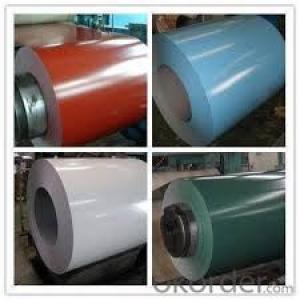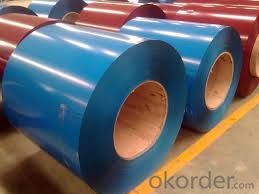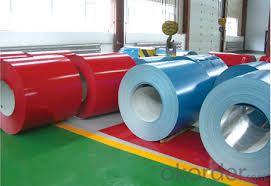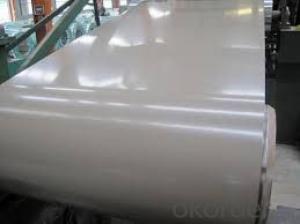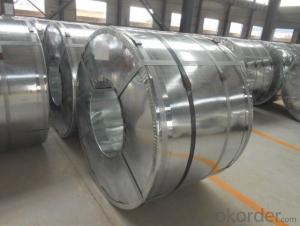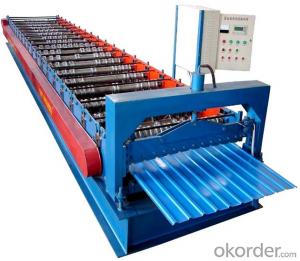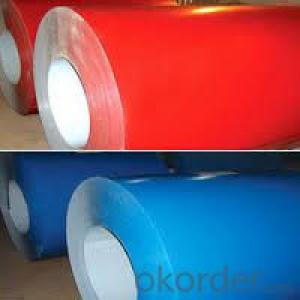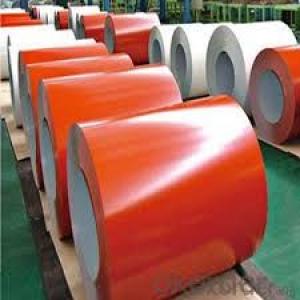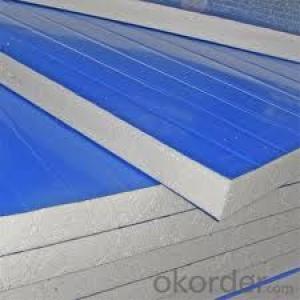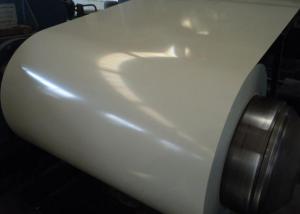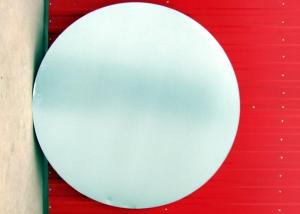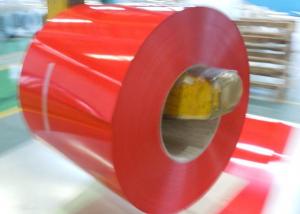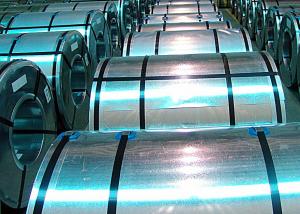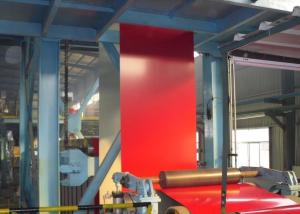Prepainted Cold Rolled Galvanized Steel Sheet Coil/PPGI
- Loading Port:
- China main port
- Payment Terms:
- TT OR LC
- Min Order Qty:
- 25 m.t.
- Supply Capability:
- 1000 m.t./month
OKorder Service Pledge
OKorder Financial Service
You Might Also Like
Product Description
Color Coated Galvanized Steel Coil
ISO System
SGS and BV Audited company
Industry experience over 10 years
Management Systems-Internal Software
Finished Product Inventory-More Than 500 Tons
Raw Material inventory -Over 800 Mertic Tons
Shipment of goods -More than 30 countries worldwide
We have the most convenient transport and prompt delivery
We offer competitive price with best service
We have high technical production line with top quality products
We have win high reputation based on best quality products
Product Description
PPGI:
1, Introduction: Color coated steel coils(sheets), i. e. PPGI, also called prepainted steel coils(sheets), are made of galvanized steel coils(sheets) with polymer coatings as surface. It's a new enclosure material and building board with characteristics of light-weighted, heat preserved&insulated, easily installed with bright colors.
2, Production Process: Pretreatment(Degreasing)_Drying_Chromating_Paint Basic Oil_Cooling_Drying_Color Coating_Cooling_Film-covering_Rolling Up
3, Characteristics:
Good at corrosion resistence. Besides zinc coating of the basic plate of galvanized steel sheet, the color coating as the surface has double lifetime to ensure better anticorrosion effect.
with excellent cold bending molded manufacturablity, PPGI products can be processed or directly used as final product. As being light-weighted and conveniently transported, they're widly used to replace wood to save energy.
There're thousands of colors can be chosen as per different application. Any color plays well in decoration.
No pollution with high recycling rate, PPGI coils and sheets are strongly recommended as enviroment-friendly products by the government.
4, Appliance: Thanks to the above characteristics, color coated steel coils and sheets are widly used in construction, furniture industry, transportation industry, ect.
5, eye bands and 4 circumferential bands in steel, galvanized metal fluted rings on inner and outer edges, galvanized.
Type of substrate | Grade of color plate | Standard | Application& feature |
Hot dip galvanized | TDC51D+Z | DC51D+Z | ordinary use |
TDC52D+Z | DC52D+Z | SPCD | |
TDC53D+Z | DC53D+Z | SPCE | |
TS280GD+Z | TS280GD+Z | Structure use | |
TS350GD+Z | TS350GD+Z | Structure use | |
TS550GD+Z | TS550GD+Z | High strength structure use | |
Hot dip galvalume | TDC51D+AZ | DC51D+AZ | ordinary use |
TDC52D+AZ | DC52D+AZ | SPCD | |
TS250GD+AZ | S250GD+AZ | Structure use | |
TS300GD+AZ | 300GD+AZ | Structure use | |
TS350GD+AZ | 350GD+AZ | Structure use | |
TS550GD+AZ | 550GD+AZ | High strength structure use |
Type of coating process | Front:double coated&double drying |
Type of substrate | Hot dip galvanized,galvalume,zinc alloy,cold rolled steel,aluminium |
Coating | Top paint:10-25 micron(Normal 10-12 micron) |
Back paint:5-12 micron(Normal 5-7 micron) | |
ID(mm) | 508/610mm |
Coil weight(ton) | 3-9 ton |
Coating types | Top paint:PVDF,HDP,SMP,PE,PU |
Functions: | Decorative,Machinability,Weather resistance,Scrath resistance,Stain |
Primer paint: | polyurethane,Epoxy,PE |
Back paint: | Epoxy,modified polyester |
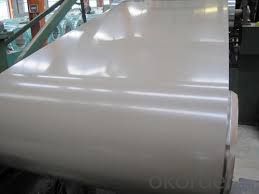
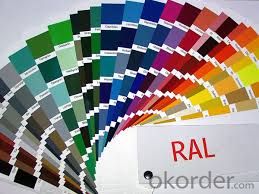
- Q: How are steel coils used in the manufacturing of household goods?
- Steel coils are used in the manufacturing of household goods in a variety of ways. One common use is in the production of appliances such as refrigerators, washing machines, and ovens. The steel coils are shaped and formed into different parts and components of these appliances, providing strength and durability to the finished product. Additionally, steel coils are often used in the manufacturing of furniture, particularly in the construction of metal frames for chairs, tables, and bed frames. The coils can be bent, welded, or molded into the desired shape, providing a sturdy and reliable foundation for these household items. Furthermore, steel coils are also utilized in the production of kitchen utensils and cookware. The coils can be stamped or pressed into different shapes, such as pots, pans, and cutlery, creating durable and heat-resistant products that are essential for everyday cooking and food preparation. In summary, steel coils play a crucial role in the manufacturing of household goods by providing strength, durability, and versatility to a wide range of products.
- Q: My company want to welding stainless steel, do not know to use what welding machine?
- Stainless steel is a fascinating metal to weld. Welding stainless can be difficult if you don't know what you are doing. It reacts to excessive heat by warping and distorting once it cools. Everything shows up in stainless. If you weld with too much heat you can see it by the heat marks left in the metal along with any distortion. It also scratches very easily so you must take care when welding on a metal table. Stainless steels can be welded using several different procedures such as shielded metal arc welding, gas tungsten arc welding, and gas metal arc welding but stainless steel welding wires have been developed for welding stainless steels.
- Q: How are steel coils used in the production of steel bolts?
- Steel coils are used in the production of steel bolts by being unwound and fed into a machine that cuts and shapes them into the desired bolt size and shape. The coils provide a continuous and uniform supply of steel, ensuring consistent quality and efficiency in bolt production.
- Q: How are steel coils used in the production of metal roofing?
- Steel coils are used in the production of metal roofing by being fed through a series of machines that shape, cut, and coat the steel to create the final roofing product. The coils are uncoiled and flattened, then formed into the desired profile using roll forming machines. The formed sheets are then cut into specific lengths and coated with protective layers to enhance durability and corrosion resistance. These coated steel sheets are then packaged and shipped to construction sites for installation as metal roofing.
- Q: What are the different methods of laminating steel coils?
- There exist multiple techniques for laminating steel coils, each possessing its own advantages and applications. The prominent techniques encompass hot rolling, cold rolling, and continuous annealing. Hot rolling involves heating the steel above its recrystallization temperature and subsequently passing it through a sequence of rollers to generate thin sheets or coils. This method is frequently employed for the mass production of steel with a uniform thickness and surface finish. Structural applications such as construction and automotive manufacturing commonly utilize hot rolled steel coils. In contrast, cold rolling entails passing the steel coil through a set of rollers at room temperature. This process not only reduces the thickness of the steel but also enhances its surface finish and mechanical properties. Industries requiring high precision and quality, such as appliance manufacturing, electrical equipment, and automotive components, typically employ cold rolled steel coils. Continuous annealing represents an alternative approach to laminating steel coils. It involves heating the steel coil to a specific temperature and gradually cooling it in a controlled environment. This procedure aids in alleviating internal stresses and enhancing the mechanical properties of the steel, such as strength and ductility. Continuous annealing is frequently utilized to produce high-quality steel coils for applications necessitating superior surface finish and formability, like automotive body panels and household appliances. Additional less prevalent methods of laminating steel coils comprise electro-galvanizing and hot-dip galvanizing. Electro-galvanizing encompasses coating the steel with a zinc layer through an electroplating process, while hot-dip galvanizing entails immersing the steel coil in molten zinc. These techniques primarily serve corrosion protection purposes and are commonly employed in the construction industry, particularly for outdoor structures and infrastructure. To summarize, the various techniques for laminating steel coils encompass hot rolling, cold rolling, continuous annealing, electro-galvanizing, and hot-dip galvanizing. Each approach offers distinct advantages and is selected based on the specific requirements of the application.
- Q: What are the different methods of cutting edge trimming for steel coils?
- There exist multiple techniques for trimming steel coils, each with unique benefits and applications. Some of the frequently employed methods are as follows: 1. Shearing: This method entails cutting the steel coil's edge using sharp blades. It is a quick and efficient technique suitable for high-volume production. However, shearing may lead to slight distortion or burrs along the cut edge. 2. Slitting: Slitting involves passing the steel coil through rotating circular blades, resulting in narrower strips. This method is commonly adopted when precise width control is necessary, such as for the production of narrow strips or coils with multiple widths. 3. Laser cutting: Laser cutting is a highly precise technique that employs a laser beam to cut through the steel coil. It offers the advantage of producing clean and precise cuts without any distortion or burrs. Laser cutting is frequently used for intricate or complex shapes that require high accuracy. 4. Plasma cutting: Plasma cutting utilizes an ionized gas jet to cut through the steel coil. It is particularly suitable for thicker materials or applications where high cutting speeds are required. Plasma cutting can generate clean and smooth cuts, although a slight bevel may be present on the edge. 5. Waterjet cutting: Waterjet cutting employs a high-pressure jet of water mixed with an abrasive substance to cut through the steel coil. This technique is highly versatile and can be used for various materials and thicknesses. Waterjet cutting is renowned for producing precise cuts without any heat-affected zone. 6. Sawing: Sawing is a traditional method that involves using a rotating saw blade to cut through the steel coil. It is commonly used for thicker materials or when a rougher cut is acceptable. Sawing can be performed manually or with the assistance of automated sawing machines. Each method possesses its own advantages and considerations, and the selection depends on factors such as required accuracy, production volume, material thickness, and desired edge quality.
- Q: What is the process of uncoiling steel coils?
- The process of uncoiling steel coils involves using a machine known as a decoiler or uncoiler, which holds the coil and gradually unwinds it. The coil is typically mounted onto the decoiler's mandrel, and then the machine's motor or hydraulic system rotates the mandrel to release the tension on the coil. As the coil unwinds, it passes through a straightening mechanism, which helps to remove any residual coil set or curvature. The uncoiled steel is then ready for further processing or use in various applications.
- Q: what is the densest type of steel ? what is its density ?what is its tensile strength .
- Technically, any metal that is not pure could be considered a steel alloy with the addition of iron. Density will vary depending on the percentage of each alloying element. In commonly available alloys, those with a high percentage of nickel will be the most dense. Nickel has a high molecular weight and readily alloys with most other metals. This class of materials is stainless steels, heat resistant super alloys such as inconel, hastalloy, etc. Tensile strength is not directly related to nickel content. Elements such as boron, manganese, molybdenum, and chromium have the most effect on tensile strength in steel alloys both as rolled and heat treated. Hope that answers your question.
- Q: How does stainless steel soap work? I have read the detailed explanation on Wikipedia, but their desciption seems skeptical on the actual chemical process that may take place from using such an item. Is there an actual scientific explanation to how stainless steel soap is able to clean your hands, when it is only a piece of metal?
- Metal Soap Bar
- Q: I'm kind of confused as to how the difference between a stainless steel and blued steel firearm is sometimes only $20 or so. Isn't stainless steel fairly more expensive to manufacture than plain carbon steel? Are some stainless steel firearms simply stainless steel finished with carbon steel underneath?
- I don't know that stainless can be laminated to steel very easily. Stainless is a little more expensive. The problem comes in that stainless is much harder to machine that normal gun steel. With laminated steel, you would still have the problem of machining the stainless. Occasionally firearms are nickle plated or barrels are chrome lined.
Send your message to us
Prepainted Cold Rolled Galvanized Steel Sheet Coil/PPGI
- Loading Port:
- China main port
- Payment Terms:
- TT OR LC
- Min Order Qty:
- 25 m.t.
- Supply Capability:
- 1000 m.t./month
OKorder Service Pledge
OKorder Financial Service
Similar products
Hot products
Hot Searches
Related keywords
